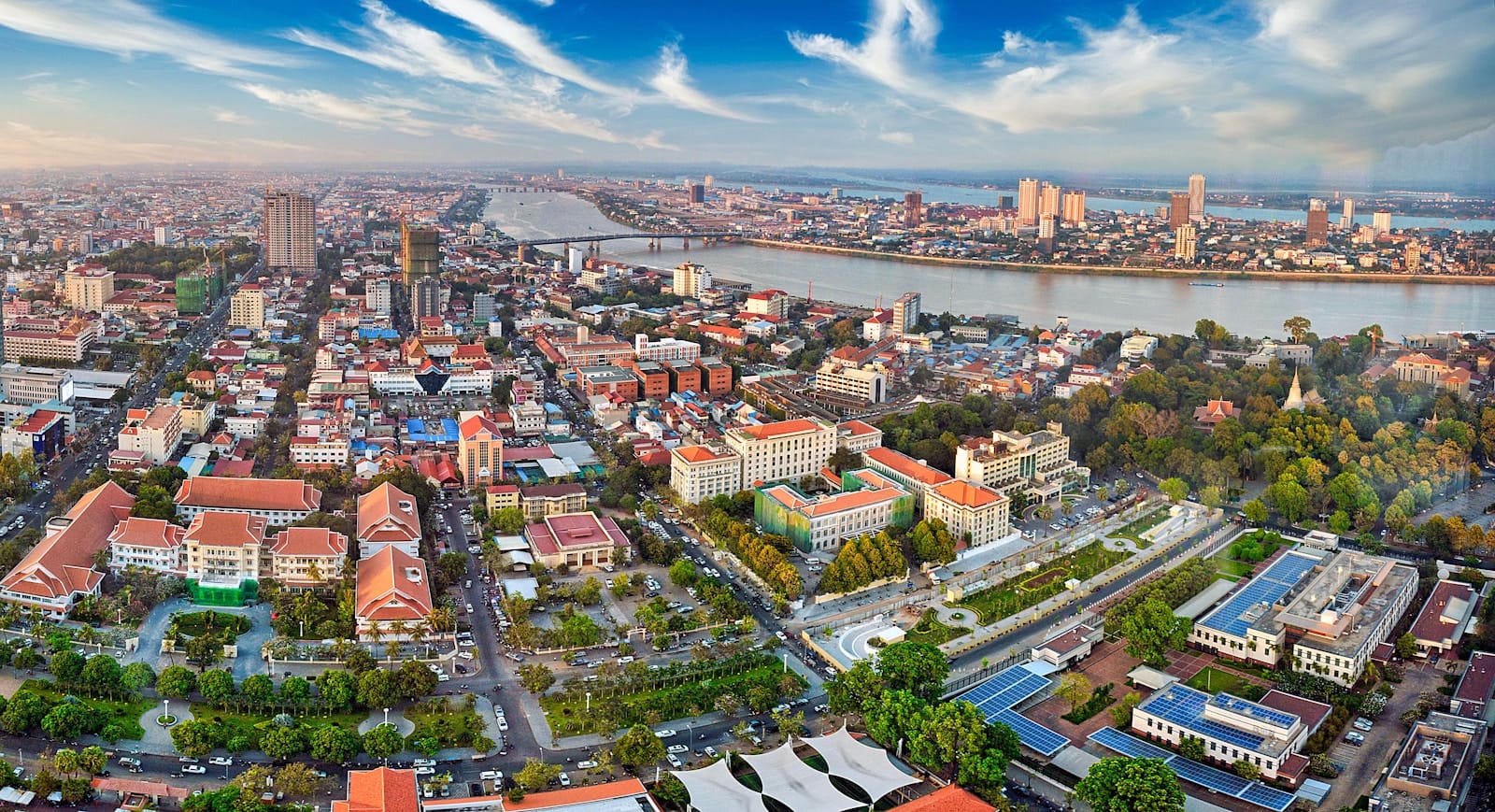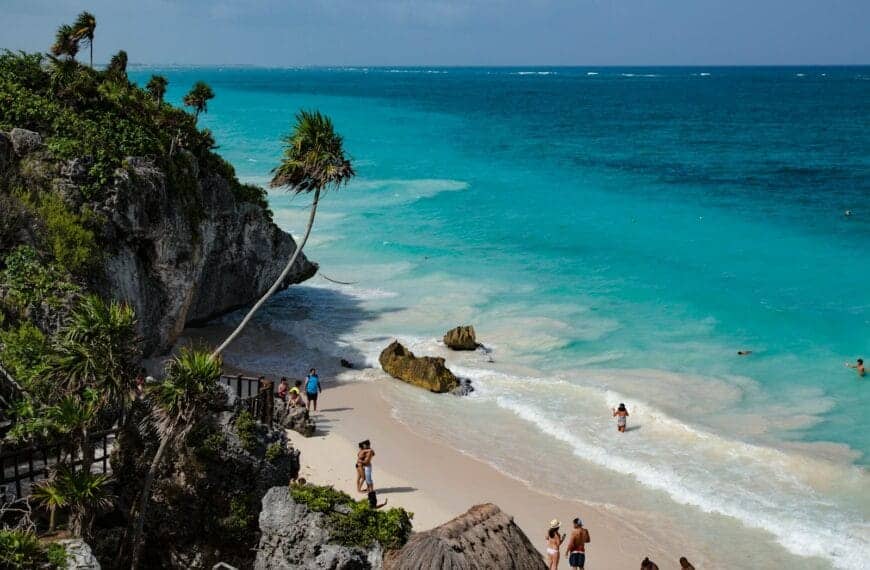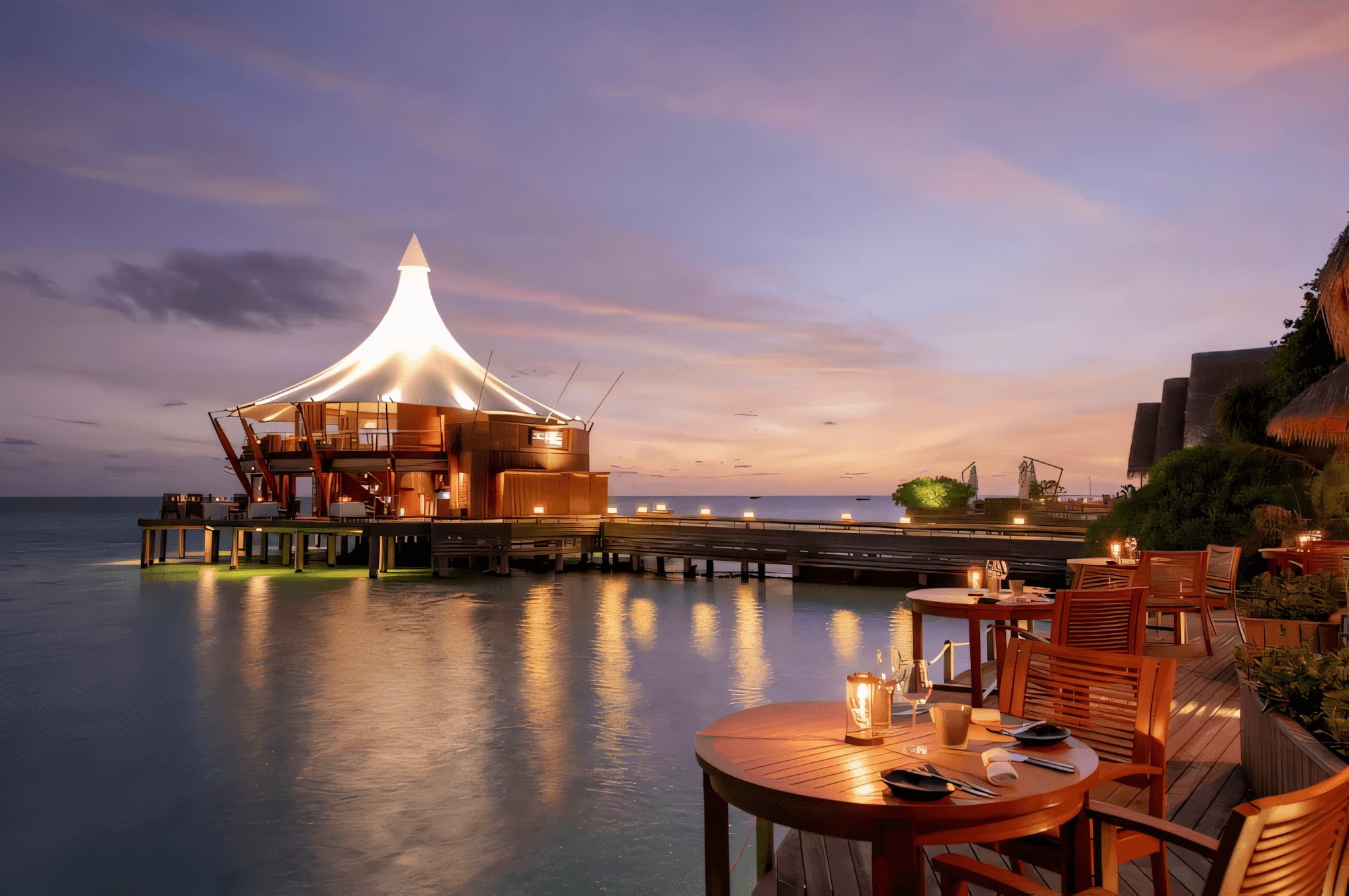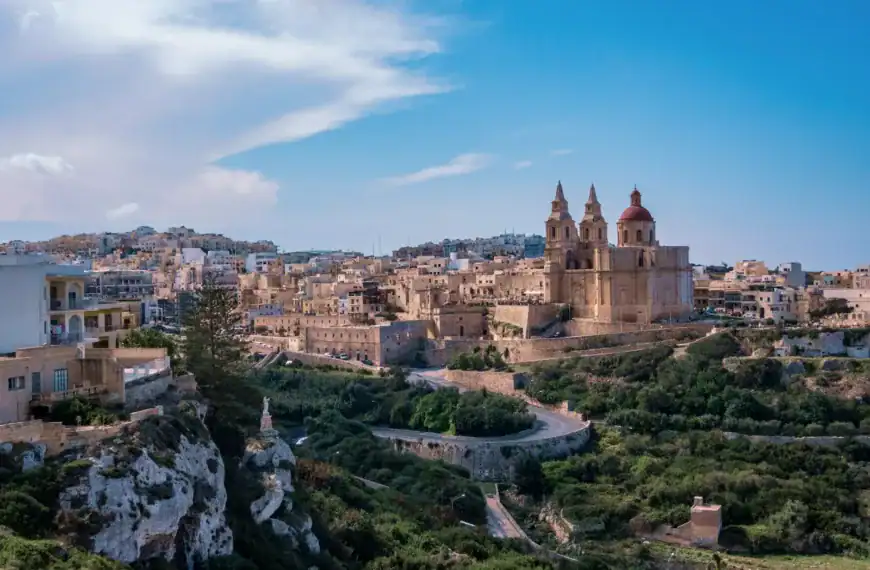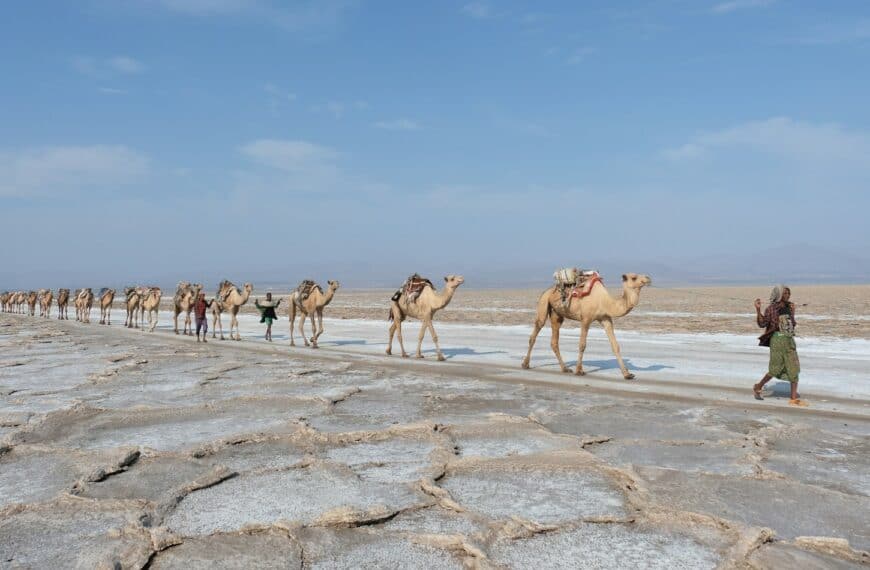Cambodia Travel Guide: Mystical Temples, Lush Jungles & Soulful Culture
Intro to Cambodia Travel Guide
From the stone-carved grandeur of Angkor Wat to floating villages on the Tonlé Sap, Cambodia is a destination where myth and memory walk hand in hand. This landlocked jewel in Southeast Asia is not just a stop on the backpacker circuit — it’s a place where history breathes through ancient temples, where jungle treks lead to hidden waterfalls, and where the warmth of Khmer hospitality stays with you long after your trip ends.
Start planning your journey with our complete Cambodia Travel Guide — discover sacred heritage sites, scenic islands, rich cuisine, and vibrant city life that reflect the nation’s deep resilience and creativity.
Looking for experiences and tours? Browse unforgettable Cambodia tours and explore the top things to do in Cambodia.
Where to Go in Cambodia
Banteay Meanchey | Battambang | Kampong Cham | Kampong Chhnang | Kampong Speu | Kampong Thom | Kampot | Kandal | Kep | Koh Kong | Kratie | Mondulkiri | Phnom Penh | Preah Sihanouk | Preah Vihear | Pursat | Ratanakiri | Siem Reap | Stung Treng | Svay Rieng | Takeo
💡Quick Facts:
Continent: Asia
Country: Cambodia
Area: 181,035 km²
Population: ~17 million (2024)
Density: ~94/km²
Capital: Phnom Penh
Regions: Phnom Penh, Siem Reap, Battambang, Kampot, Sihanoukville, Mondulkiri
Language(s): Khmer (official); English and French widely spoken in tourism
Currency: Cambodian Riel (KHR); US Dollar widely used
Time Zone: GMT+7
Airports: PNH (Phnom Penh), REP (Siem Reap–Angkor), KOS (Sihanoukville)
Climate: Tropical; monsoon season May–October
Known For: Angkor Wat, Buddhist temples, floating villages, Khmer culture, tragic history (Khmer Rouge)
🛂Arrival Info:
Visa required for most travelers; available online or on arrival
e-Visa system available for tourism at eVisa Cambodia
Visa on arrival at airports and land borders for 30-day stay
ASEAN nationals: visa-free for up to 30 days
Passport must be valid 6 months beyond entry with one blank page
Overstays incur daily fines
💉Health Info:
Recommended: Hepatitis A, Typhoid, Hep B, Japanese Encephalitis (for rural areas or long stays)
Malaria risk in rural and forested areas (e.g., Mondulkiri, Ratanakiri)
Tap water not safe — drink bottled or purified water only
Decent hospitals in Phnom Penh and Siem Reap; travel insurance essential
✅ Check travel insurance options for travel emergencies, delays, and medical needs abroad — Get coverage here
✅ Stay Informed with Official Updates: WHO – International Travel & Health | CDC – Travel health updates
🚨Travel Advisory:
U.S. State Dept: Level 1 – Exercise Normal Precautions
Landmine risk remains in remote provinces — avoid venturing off-path
Political demonstrations occasionally occur in Phnom Penh
✅ Stay Informed with Official Updates: US Travel Advisory | UK Foreign Travel Advice
📅Holidays:
Khmer New Year – April 13–15: Traditional 3-day festival, major closures
Pchum Ben – September/October: Ancestor worship; banks/government offices closed
Water Festival (Bon Om Touk) – November: Boat races on the Tonle Sap River
Independence Day – November 9
Victory Over Genocide Day – January 7
💰Visitor Info:
Dual currency economy: US Dollars and Cambodian Riel (KHR)
ATMs dispense both currencies; small change often in Riel
Credit cards accepted in hotels and upscale businesses
Tipping: not mandatory, but 5–10% appreciated
Duty-Free: 200 cigarettes, 2L wine, 1L spirits
Bargaining is common in markets and tuk-tuks
✈️Airports:
PNH – Phnom Penh International Airport (main hub)
REP – Siem Reap–Angkor International Airport (new international facility, opened 2023)
KOS – Sihanoukville International Airport (coastal access point)
✅ Delayed or canceled flight? Check if you’re eligible for compensation
🚍Transport:
Tuk-tuks and motorbike taxis (motodops) are common for short distances
Ride-hailing apps: Grab and PassApp widely used in cities
Long-distance buses link all major cities; trains operate on limited routes
Domestic flights between Phnom Penh, Siem Reap, and Sihanoukville
Driving on the right; roads often unlit and pothole-ridden — not recommended for tourists
✅ Book reliable airport transfers and in-city rides in advance. Reserve your ride here
📶Connectivity:
SIM cards easily available from Metfone, Smart, or Cellcard — cheap 4G plans
eSIMs supported by some providers
Free Wi-Fi in most hotels, cafes, and restaurants
Coverage strong in urban areas, weak in rural provinces
✅ Stay connected abroad with affordable eSIM data packs. Get your eSIM here
📜Laws & Etiquette:
Legal drinking age: 18
Modest dress expected at temples — cover shoulders and knees
Don’t touch someone’s head or point with your feet
Buddhist monks must not be touched by women
LGBTQ+ travelers generally safe, but discretion recommended in rural areas
🛡️Emergency Info:
Emergency (Police): 117
Ambulance: 119
U.S. Embassy Phnom Penh: +855 23 728 000
Petty theft and bag snatching occur — stay alert in urban areas
Travel insurance with health and evacuation coverage is strongly advised
Insert affiliate insurance link here
✅ Use embassy locator tools: Embassies Worldwide
🌦️Weather:
Best time to visit: November to March (cooler dry season, ideal for temple visits)
Wet season: May to October – lush landscapes, fewer tourists, occasional floods
Hottest months: March–May, often over 35°C (95°F)
✅ Stay prepared—check the weather forecast for your destination — Weather Forecast
Cambodia by Region – Where to Go
Siem Reap Province
Siem Reap: The gateway to Angkor, this city blends modern comforts with traditional charm. Explore the buzzing night markets, Khmer cooking classes, and elegant colonial-era architecture alongside awe-inspiring temples like Angkor Wat, Ta Prohm, and Bayon.
Angkor Archaeological Park: A UNESCO World Heritage site sprawling over 400 square kilometers, filled with crumbling temples, jungle ruins, and sacred pathways.
Phnom Penh & Central Cambodia
Phnom Penh: Cambodia’s energetic capital balances historical gravity and youthful creativity. Visit the Royal Palace, Tuol Sleng Genocide Museum, and riverside cafés along Sisowath Quay.
Kampong Thom: A quiet province dotted with rural temples and the important archaeological site of Sambor Prei Kuk, a pre-Angkorian city overgrown with nature.
Northwestern Cambodia
Battambang: Known for its arts scene, rice paddies, bamboo train, and countryside villages. French-colonial architecture and peaceful river settings define its charm.
Banteay Chhmar: A remote yet magnificent temple complex that offers an uncrowded alternative to Angkor.
Southern Cambodia & Coast
Kampot: A laid-back riverside town famous for its pepper farms, French architecture, and limestone caves. Ideal for motorbike rides and scenic kayak tours.
Kep: A sleepy coastal escape with crab markets, offshore islands, and jungle-backed beaches — perfect for unwinding.
Sihanoukville: Formerly a beach party hub, now a gateway to Cambodia’s best islands despite rapid development.
Islands & Gulf of Thailand
Koh Rong: White sand beaches, coral reefs, and a lively backpacker scene. Some parts are quiet and pristine — others offer nightlife and watersports.
Koh Rong Samloem: Tranquil and untouched, this smaller island is ideal for hammock naps, snorkeling, and digital detoxes.
Northeastern Cambodia
Mondulkiri: A haven for eco-travelers with elephant sanctuaries, rolling green hills, and indigenous Bunong villages.
Ratanakiri: Rugged landscapes, volcanic lakes, and remote jungle treks. Ideal for off-the-beaten-path adventurers.
Top Places to Visit in Cambodia
Cultural Capitals
- Angkor Wat (Siem Reap): The world’s largest religious monument, with sunrise reflections that define Cambodia’s spiritual heart.
- Royal Palace (Phnom Penh): A glittering complex of Khmer architecture and history in the capital.
Nature Escapes
- Bousra Waterfall (Mondulkiri): A double-tiered waterfall in the highlands, surrounded by picnic areas and forests.
- Yeak Laom Volcanic Lake (Ratanakiri): A surreal turquoise lake perfect for swimming and exploring via jungle trails.
Historic Sites
- Tuol Sleng & Killing Fields: Sobering reminders of Cambodia’s past, these sites honor lives lost under the Khmer Rouge.
- Sambor Prei Kuk: A pre-Angkorian city cloaked in forest, with temples older than Angkor itself.
Island Getaways
- Koh Ta Kiev: Remote and rustic with simple bungalows, jungle hikes, and stargazing without light pollution.
- Koh Thmei: An eco-island within Ream National Park — ideal for birdwatching, kayaking, and coral reef snorkeling.
How to Choose Where to Go in Cambodia
Planning a short trip? Prioritize Siem Reap for temples and culture, and Phnom Penh for history and city energy. Combine this with Kampot or Kep for relaxation.
For nature lovers and adventurers, Mondulkiri and Ratanakiri offer a glimpse into indigenous life and raw jungle treks. Beach seekers should consider island-hopping between Koh Rong and Koh Rong Samloem after relaxing in Kampot.
Pair cities and coasts or temples and forests for the most rewarding experience in a 10–14 day trip.
How to Get Around Cambodia
Cambodia’s transport network is evolving, with major highways and bus routes connecting most provinces.
- Long-distance buses and minibuses (e.g., Giant Ibis, Mekong Express) link Phnom Penh, Siem Reap, and Sihanoukville efficiently.
- Domestic flights are available between Siem Reap and Phnom Penh.
- Tuk-tuks and ride-hailing apps (like Grab) are common in cities.
- Scooter rentals are popular in towns like Kampot and Siem Reap.
- Ferries connect Sihanoukville to the islands.
- Avoid driving yourself unless you’re experienced with Southeast Asian traffic.
Travel Budget & Costs in Cambodia
Cambodia is one of Southeast Asia’s best-value destinations.
Daily Budget Estimates:
- Budget travelers: $25–$40 (hostels, street food, public buses)
- Mid-range: $50–$90 (hotels, private transport, guided tours)
- Luxury: $150+ (boutique hotels, fine dining, private transfers)
Sample Prices:
- Khmer meal: $2–$6
- Angkor Pass (3 days): $62
- Tuk-tuk ride in Phnom Penh: $2–$4
- Island bungalow: $30–$80/night
Save by using buses, eating local, and booking combo passes for attractions.
Best Time to Visit Cambodia
Dry Season (Nov–April): Best time to explore temples, beaches, and cities. December–February is cooler and busiest.
Wet Season (May–Oct): Landscapes are lush, and crowds are fewer. Rain usually comes in short bursts, especially in the afternoon.
- Best for temples: November–February
- Best for waterfalls and greenery: August–October
- Best for festivals: April (Khmer New Year), October (Pchum Ben)
Must-See Experiences in Cambodia
- Sunrise at Angkor Wat: Watch mist rise over the ancient stones as monks pass by in saffron robes.
- Boat ride on Tonlé Sap Lake: Glide past floating villages and mangrove forests.
- Khmer cooking class in Siem Reap: Visit local markets, learn secret spice blends, and prepare dishes like fish amok and green mango salad.
- Trek with elephants (Mondulkiri): Visit ethical sanctuaries where elephants roam free and you walk beside them, not ride.
- Street food tour in Phnom Penh: Sample skewers, noodle soups, and unique desserts in bustling local markets.
- Bamboo train ride in Battambang: Ride an improvised rail cart through rice paddies and villages.
- Kayak through Kampot River: Paddle past fireflies, stilt houses, and water buffalo at sunset.
- Temple ruins at Banteay Chhmar: Experience serenity in a forgotten jungle temple complex.
Book immersive Cambodia tours and experience unforgettable things to do in Cambodia — from sacred temple rituals and highland treks to floating markets and lakeside food adventures.
Best Travel Itineraries in Cambodia
7-Day Classic Highlights
- Days 1–3: Siem Reap & Angkor temples
- Days 4–5: Phnom Penh historical sites
- Days 6–7: Kampot for countryside and relaxation
10-Day Culture + Nature Loop
- Siem Reap → Phnom Penh → Kampot → Koh Rong Samloem → Return
14-Day Off-the-Beaten-Path
- Siem Reap → Battambang → Kampong Thom → Phnom Penh → Mondulkiri → Ratanakiri
Customize based on your interests — or combine with Thailand or Vietnam for a regional trip.
Local Cuisine & Culinary Experiences
- Fish Amok: A creamy coconut curry with steamed fish, lemongrass, and local herbs.
- Bai Sach Chrouk: Grilled pork and rice, a simple breakfast classic.
- Nom Banh Chok: Rice noodles with fish gravy and fresh vegetables — often sold by bicycle vendors.
- Lok Lak: Stir-fried beef in a savory sauce served with rice and a fried egg.
- Khmer red curry: More mild than Thai curry, with potatoes, carrots, and chicken or beef.
- Crab with Kampot pepper: Signature coastal dish best enjoyed in Kep’s crab market.
- Night markets in Siem Reap: Great for grilled meats, fresh juices, and desserts like sticky rice with mango.
Taste your way through Cambodia with food tours, local home cooking experiences, and street eats.
Travel Safety & Cultural Etiquette in Cambodia
Safety Tips:
- Petty theft can occur in urban areas — keep valuables secured.
- Avoid nighttime travel in rural areas without a guide.
- Use registered taxis or ride apps in cities.
Cultural Etiquette:
- Dress modestly when visiting temples (shoulders/knees covered).
- Remove shoes before entering sacred spaces or homes.
- Use two hands or your right hand to give/receive.
- Public displays of affection are frowned upon in rural areas.
Health Tips:
- Stay hydrated; tap water is not safe to drink.
- Bring insect repellent — dengue risk exists in the rainy season.
- Carry sun protection and a travel first-aid kit.
Where to Go Next – Pair Cambodia with These Destinations
- Thailand: Seamless border crossings, with flights or overland options via Poipet or Koh Kong.
- Vietnam: Combine Cambodia with the Mekong Delta or Ho Chi Minh City for cultural contrast.
- Laos: A peaceful complement to Cambodia, best accessed from northern Cambodia.
- Malaysia: Affordable regional flights make Kuala Lumpur or Penang a great pairing.
- Indonesia: Add on Bali or Java for beach or volcano experiences after Cambodia’s temples.
Vietnam Travel Guide | Thailand Travel Guide | Malaysia Travel Guide | Laos Travel Guide
Final Planning Checklist for Cambodia
- Finalize itinerary: temples, cities, nature, and coasts
- Book Angkor Pass, accommodations, and internal transport
- Download offline maps and Google Translate Khmer
- Check visa requirements (many get e-visa or visa-on-arrival)
- Purchase travel insurance with medical coverage
- Arrange for local SIM card or eSIM upon arrival
- Pack light, breathable clothing + temple attire
- Review customs around temple visits and tipping
Explore Cambodia with confidence using our trusted tips, local insights, and region-by-region planning tools.
For more expert travel tips, practical strategies, and trusted tools — visit our Homepage and get inspired for your next trip.

